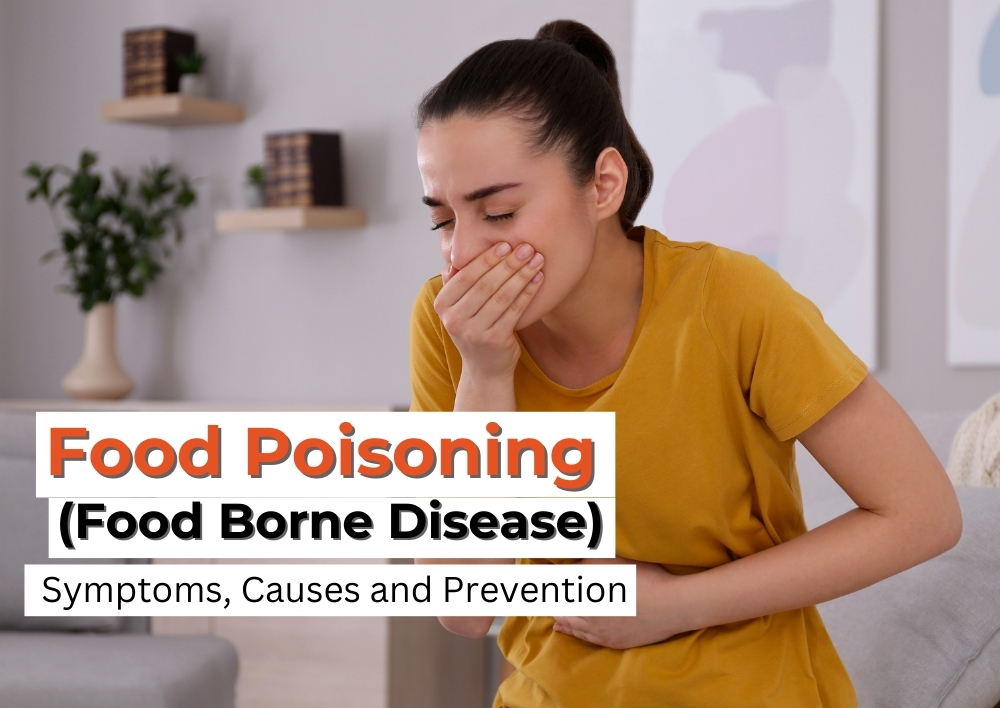Insightful Bytes
Your daily dose of informative news and inspiring insights.
Dinner or Disaster: The Thin Line of Food Poisoning
Explore the fine line between a delicious dinner and food poisoning disaster—your guide to safe dining choices awaits!
Understanding the Hidden Dangers: Common Foods That Cause Food Poisoning
Understanding the hidden dangers of food poisoning is crucial for maintaining health and safety in our daily lives. Many people might not realize that common foods can harbor dangerous bacteria, viruses, or parasites that can lead to serious illness. Some of the most notorious culprits include raw or undercooked poultry, which may contain Salmonella or Campylobacter, and undercooked eggs, often linked to Salmonella infections. Additionally, foods like raw seafood and unpasteurized dairy products can also pose significant risks. It's essential to be aware of these dangers to ensure safe food handling and preparation practices.
Another group of foods that often goes overlooked includes fresh produce. While fruits and vegetables are vital for a healthy diet, they can sometimes be contaminated with harmful bacteria such as E. coli or Listeria, particularly if they are not washed thoroughly. Ground meats present similar risks, as the grinding process can spread bacteria throughout the meat. To minimize the risk of foodborne illnesses, consumers should adhere to strict food safety guidelines, including cooking foods to the appropriate temperatures and practicing good hygiene in the kitchen. Always prioritize education on food safety to protect yourself and your loved ones.

Is Your Kitchen Safe? Essential Tips to Prevent Food-Borne Illness
Ensuring that your kitchen is safe from food-borne illnesses is crucial for maintaining the health of yourself and your loved ones. One of the first steps in preventing these illnesses is to practice proper food handling techniques. Always wash your hands before and after preparing food, especially when switching between raw and cooked items. Additionally, ensure that your utensils, cutting boards, and countertops are thoroughly cleaned with hot, soapy water regularly. This will help eliminate harmful bacteria and keep your kitchen a safe space for meal prep.
Temperature control is another vital element in food safety. To prevent the growth of bacteria, keep your refrigerator set at 40°F (4°C) or below. Use a food thermometer to ensure that cooked meats reach safe internal temperatures: 165°F (74°C) for poultry, 145°F (63°C) for fish, and 160°F (71°C) for ground meats. Always store leftovers in airtight containers and consume them within 3 to 4 days. By adhering to these essential tips, you can significantly reduce the risk of food-borne illness in your kitchen.
What Are the Symptoms of Food Poisoning and When Should You Seek Help?
Food poisoning can manifest through a variety of symptoms that may appear within hours or days after consuming contaminated food or beverages. Common symptoms include nausea, vomiting, diarrhea, abdominal pain, and cramps. In some cases, individuals may also experience fever, chills, and fatigue. It's important to recognize that symptoms can vary depending on the type of bacteria or virus involved, and while many cases resolve within a few days, some may escalate to more severe health issues.
If you experience symptoms of food poisoning, it's crucial to monitor your condition closely. You should seek medical help if you encounter any of the following:
- Persistent vomiting that prevents you from keeping fluids down.
- Dehydration symptoms such as dry mouth, dizziness, or decreased urination.
- High fever (over 101.5°F or 38.6°C).
- Diarrhea lasting more than three days.
- Severe abdominal pain or cramping.